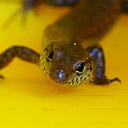Member-only story
Nature Diary
A New Leaf
Lessons from the botanical rainbow
At this time of year, the elms and plane trees in my home town of Melbourne start to shed their leaves in preparation for winter. They are northern hemisphere species acclimatised to the topsy-turvy seasons Down Under. Most Australian native trees drop their leaves piecemeal or in response to summer drought, when water is at a premium and unprotected leaves leak like paper bags. Only Tanglefoot or Fagus (Nothofagus gunnii) is winter deciduous. In Autumn, these small trees turn gold and gild the Tasmanian highlands.
Autumn hues are a glorious sight. But the change in colour tells a story about the complexity of a tree’s life.
As the nights grow longer and the daylight hours shorten, deciduous trees stop producing chlorophylls, the green pigments that harvest energy from light. Without constant replenishment, the concentration of chlorophyll decreases and with it the production of sugars through photosynthesis.
As the green fades, it unmasks the yellows and oranges of carotenoids. Carotenoids do double duty — they grab energy from light wavelengths missed by chlorophylls, and help to prevent heat damage. They are also anti-oxidants.
